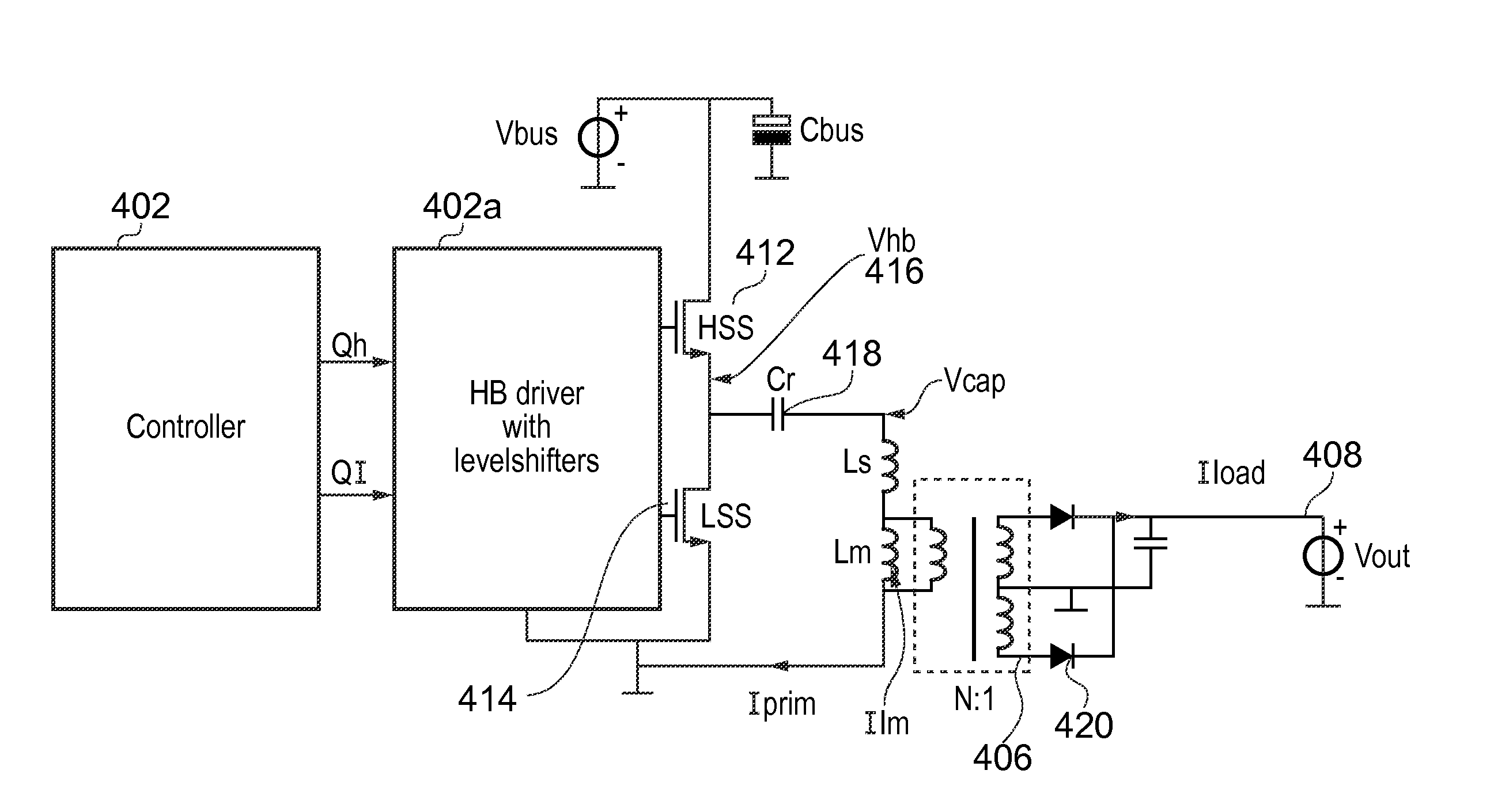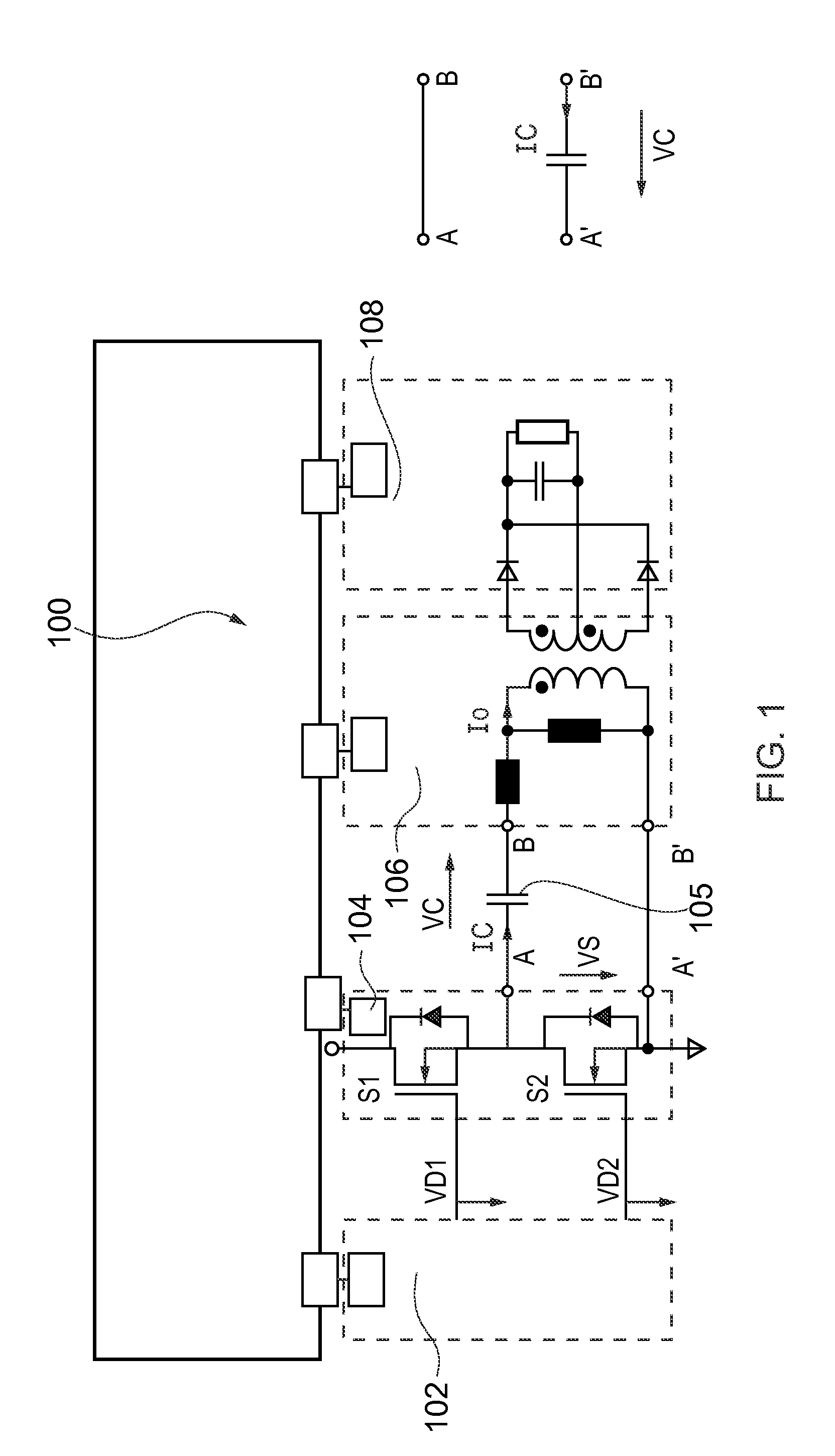Standby operation of a resonant power converter
a technology of resonant power converter and standby mode, which is applied in the direction of electric variable regulation, process and machine control, instruments, etc., can solve the problems of low efficiency of resonant llc technology, inability to avoid hard switching, and low efficiency of low load operation, so as to reduce spurious or unanticipated errors, and control effective and accurate
- Summary
- Abstract
- Description
- Claims
- Application Information
AI Technical Summary
Benefits of technology
Problems solved by technology
Method used
Image
Examples
Embodiment Construction
[0039]FIG. 1 shows a resonant power supply 100 with a non-grounded (left) and a grounded (right) resonant capacitor. Resonant power supply 100 comprises a driver / controller 102, a half-bridge 104, a transformer 106 and an output / load 108. An inverter is formed by the half-bridge 104: The inverter includes two switches, S1 and S2. S1 is the high side switch (HSS) or control FET, and S2 is the low-side switch (LSS) or sync FET. A person skilled in the art will understand that the converter could equally well contain a full-bridge with two high side switches and two low side switches. The source of S1 is connected to the drain of S2, at a half-bridge node or switch node point A, which is connected to transformer 106 at B via a capacitor 105. Alternatively, the capacitor may connect the low side of the LSS (at A′) to the transformer at B′.
[0040]In overview, during normal operation the switches S1 and S2 are alternately switched on. The voltage at the half-bridge node point A is thus alt...
PUM
 Login to View More
Login to View More Abstract
Description
Claims
Application Information
 Login to View More
Login to View More - R&D
- Intellectual Property
- Life Sciences
- Materials
- Tech Scout
- Unparalleled Data Quality
- Higher Quality Content
- 60% Fewer Hallucinations
Browse by: Latest US Patents, China's latest patents, Technical Efficacy Thesaurus, Application Domain, Technology Topic, Popular Technical Reports.
© 2025 PatSnap. All rights reserved.Legal|Privacy policy|Modern Slavery Act Transparency Statement|Sitemap|About US| Contact US: help@patsnap.com



